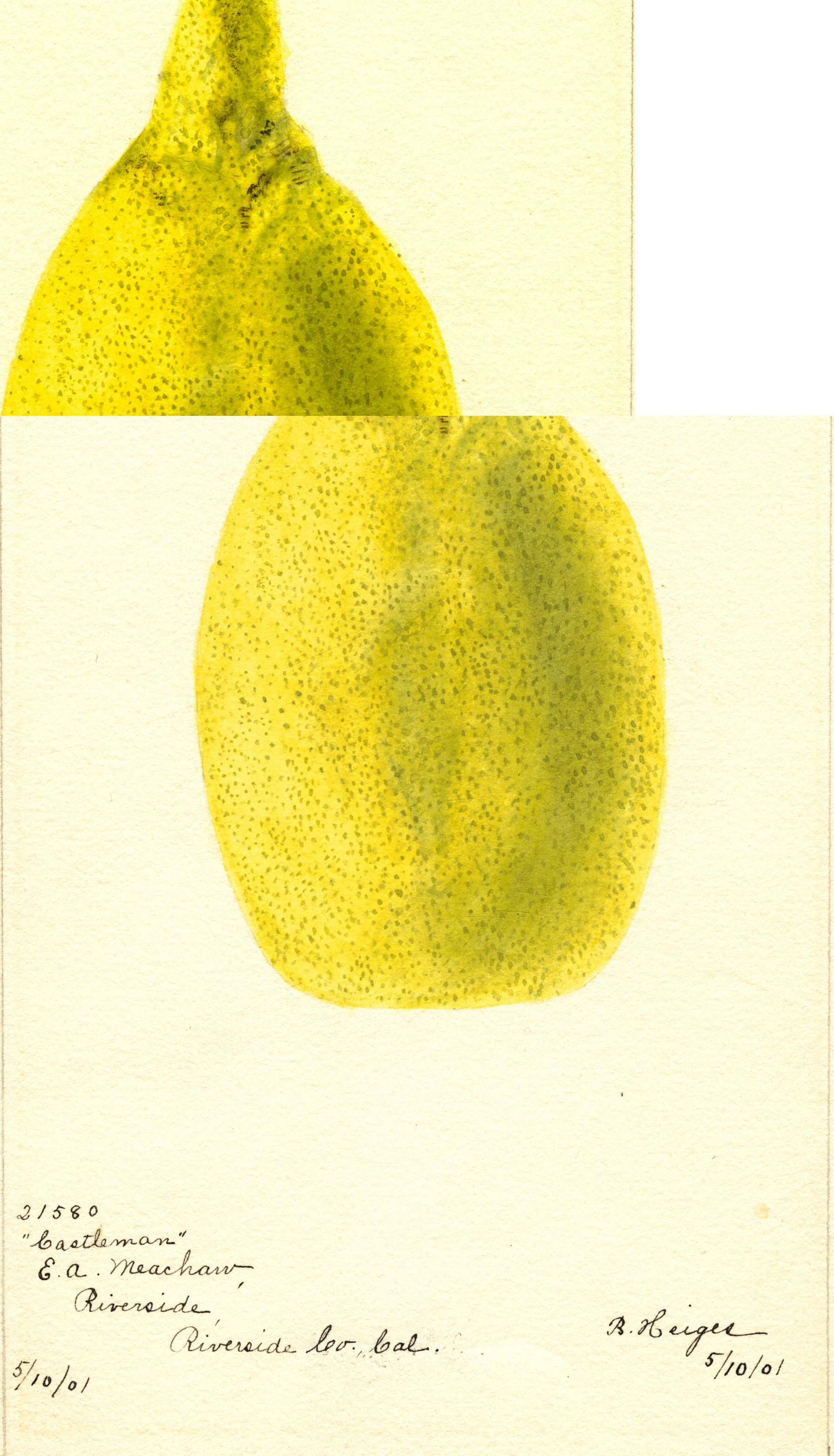 CASTLEMAN [PEAR-SHAPED]
CASTLEMAN [PEAR-SHAPED]
The caption in Byron Lelong’s 1900 classic Culture of Citrus in California read simply “Castleman Lime—A Monster.” Its fruit made other limes seem dwarfish. The smallest Castleman grew in excess of four inches in length. Each fruit contained a tea cup full of juice. Where has it gone? Has it passed into extinction like those other monsters that once roamed southern California—the dire wolf, the mammoth, and the sabre toothed tiger? Or does it linger in some old widow orchard is some neglected yard. Of all the limes created in the United States, it was the most extravagant—pear shaped, pungently acid, nearly seedless, thin skinned, and huge.
It was created in the swashbuckling early years of the citrus industry in California, in the first ten years after the opening of the Gage Canal (1882) made the fields around Riverside a citrus wonderland. Every variety ever cultivated in the western hemisphere was attempted on the hills around Riverside. A circle of well capitalized growers—William H. Backus, G. W. Garcelon, Seneca La Rue, M. B. Ogden and John S. Castleman—competed for commercial preeminence in the marketplace and horticultural preeminence in the annual citrus fair they organized.
Castleman, a Canadian, who moved to Riverside in 1887, and immediately immersed himself in the world of oranges, mandarins, kumquats, pomelos, shaddocks, lemons, was one of the few growers fascinated with limes. The Mexican Lime (what we now call the Key Lime) was to readily available on the market from Mexican sources to reward extensive planting. Only William Backus in the region worked with it. But Backus was Castleman’s great rival for first honors at the citrus fair. So in the early 1890s Castleman began ordering budded lime trees from the Garey nursery in Los Angeles. One tree in the shipment was off. It was a cross between the Mexican Lime and what must have been a Pomelo. By 1891 it was producing enormous pear shaped limes.
It was first described after its exhibition at the 1891 citrus fair in the Riverside newspaper: "Fruit large, pyriform, of a pale yellow color, with smooth, thin skin, and a strong aroma, partaking of the shaddock. Pulp juicy, with strong acid; seeds few and small. Tree very large and hardy--ornamental sort". The fruits were treated in a manner similar to lemons, picked when they first turn yellow. If left on the tree too long the fruit "turn puffy" and coarse and sometimes develop a hollow heart ["New Varieties of Citrus Fruits," Pacific Rural Press (31 October 1891), 377]. Since most limes are harvested when immature, this should not have caused too much difficulty.
Notices of the Castleman lime appear in print for twenty years after its introduction, then they vanish. In California the San Jacinto Land Company seems to have exerted a monopoly on its propagation and sale in the period 1904-05. Yet by that time there were growers and Texas. So what happened? Why did the biggest lime to ever hit the market in the United States vanish?
Image: U.S. Department of Agriculture Pomological Watercolor Collection. Rare and Special Collections, National Agricultural Library, Beltsville, MD 20705, Bertha Heiges, 1901.
David S. Shields